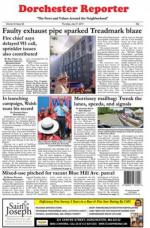December 8, 2016
The City of Boston’s 2015 plan to eliminate traffic fatalities and serious crashes by 2030 requires more funding and a more focused effort to redesign “hot spots,” or areas where there have been a high number of crashes, according to a forthcoming report.
The Massachusetts Vision Zero Coalition’s progress report, scheduled for release on Wednesday, will include a timeline and map “detailing where and when fatal traffic crashes have occurred in Boston in the past year and how the City has responded to each,” according to the coalition.
“The bottom line is that the City of Boston needs to be allocating more resources and staffing to implementing Vision Zero if it is going to meet its 2030 goal,” Richard Fries, executive director of MassBike, said in a statement. “Despite implementing some safety measures this year, we’re still seeing a large number of crashes. So far in 2016, there have been 17 confirmed traffic fatalities on streets managed by the City of Boston.”
Becca Wolfson, executive director of the Boston Cyclists Union, credited the city with taking steps to improve safety on Massachusetts Avenue between Beacon Street and Harrison Avenue but said the city has “fallen short of implementing at least 10 miles of high-priority projects of the Boston Bike Network.”
And LivableStreets Alliance executive director Stacy Thompson said the city has done a “great job” with its online, interactive crash data site, but needs to set interim benchmarks along the path to zero fatalities by 2030. The progress report, which will recommend more capital funding and staffing, will be posted online on Wednesday afternoon prior to a formal unveiling at 5:30 p.m. during the LivableStreets Alliance’s StreetTalk 10-in-1 event at the Old South Meeting House. Boston Mayor Martin Walsh, who launched the citywide initiative in March 2015, is up for reelection in 2017 and plans to deliver his State of the City address on Tuesday, Jan. 17.



